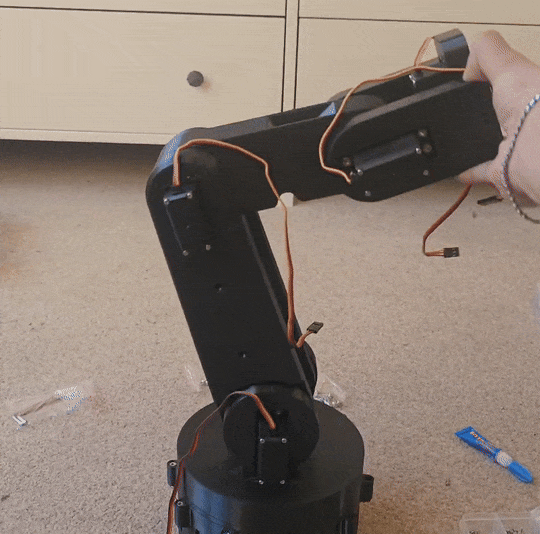5 DOF Robotic Arm for Precision ManipulationProject Details
Designing and programming a 5 Degree of Freedom (DOF) robotic arm using Python with ROS integration, achieving high precision in automated pick-and-place tasks using kinematics.[Project in progress]
5 DOF Robotic Arm for Precision Manipulation
[Project in progress]
This project involves the design and implementation of a 5 Degree of Freedom (DOF) robotic arm capable of performing precise pick-and-place operations. The system integrates Python programming with ROS (Robot Operating System) to enable modular control, simulation, and real-time execution. Forward and inverse kinematics algorithms are applied to achieve accurate positioning and smooth motion planning, ensuring high precision in automated manipulation tasks.
Key Components & Features
Design Basis
The mechanical structure is adapted from the LimpSquid designs available on Thingiverse, leveraging its modularity and printable parts.
Mechanical Design
The arm has five actuated joints—shoulder pitch, shoulder yaw, elbow, wrist pitch, and wrist roll (or equivalent)—providing a manipulable workspace sufficient for standard pick-and-place tasks. The printable components are chosen to balance strength, weight, and printability.
Actuation & Sensors
Motors (e.g. stepper motors or hobby servos) drive each joint. Optional sensors (encoders, limit switches) may be integrated to provide feedback for closed-loop control.
Kinematics & Motion Planning
Forward kinematics for position estimation given joint angles.
Inverse kinematics algorithms to compute required joint angles for target end-effector positions.
Trajectory generation (smooth paths, collision avoidance) to ensure precise and safe movement.
ROS Integration
ROS nodes implemented in Python manage individual joints, motion planning, and high-level pick-and-place logic.
Use of ROS messages/topics/services/actions to handle commands and feedback.
Optionally simulation in Gazebo (or other simulators) for virtual testing before hardware deployment.
Precision & Calibration
The system includes calibration routines to reduce errors (e.g. mapping from joint commands to actual motion, correcting for backlash or print tolerances). Repeatability metrics are measured (e.g. ±mm at certain distances).
Pick-and-Place Workflow
Specify target object location (via vision or pre-defined coordinates).
Calculate motion to approach the object.
Grasp and lift.
Move to destination.
Release.
Return to a safe or idle pose.

